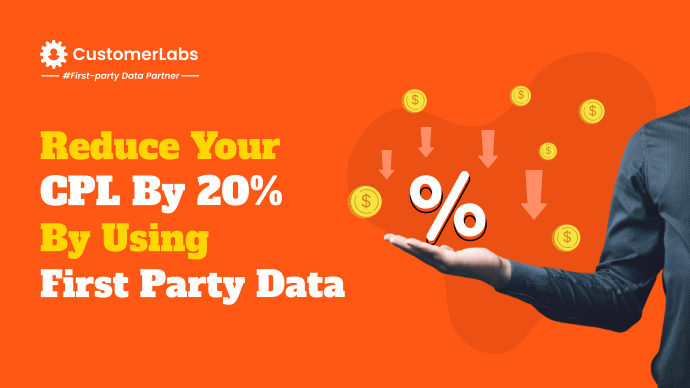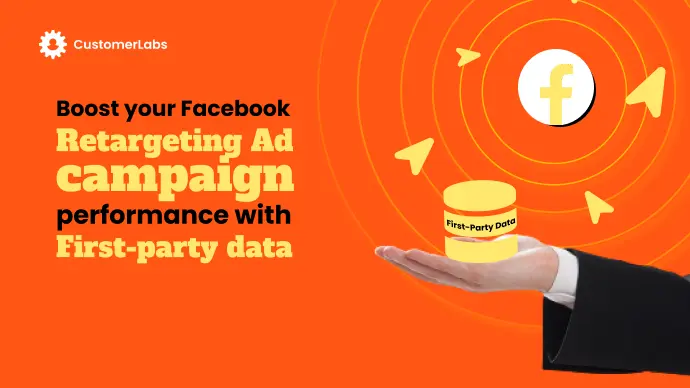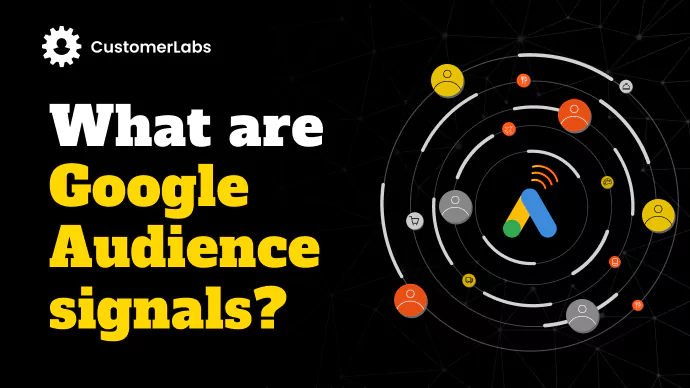Remarketing proves to be an effective strategy in marketing as you are reaching out to the audience who are already aware of your brand and are in the middle of the funnel. However, to scale remarketing campaigns that result in reduced cost per purchase (CPP) and higher return on ad spend (ROAS), you need the data of these people who have interacted with your brand.
The changing landscape of the ads ecosystem makes it difficult for marketers to collect user data and scale the remarketing campaigns effectively. The best-in-class marketers use certain advanced technologies to leverage server-side connections using privacy-preserving alternatives. This helps them collect the user’s data and scale their remarketing campaigns. Today, let us see how even the easiest and most affordable solutions help all marketers sustain in the era of digital privacy, the cookieless future, and be the best-in-class. These solutions do not demand any major resources or coding.
Let us see how the changing ads ecosystem is causing trouble in the marketing waters.
The changing ad ecosystem
2018, 2019, and beyond – the phase that shook the entire advertising industry; the phase that brought revolution and transition; 5 to 6 years and the transition is still going on… The entire period from 2019 to 2024, is a historic moment for the advertising industry. Some unexpected, unforeseen changes have shaken the tables for marketers.
GDPR, CCPA, iOS14.5+, browser third-party cookie deprecation, and various other data privacy updates popped up one after the other. These data privacy updates have made it difficult for marketers to collect and store the required data for ad operations and marketing operations.
The ad platforms updated their algorithms and brought new technologies like Conversions API, enhanced conversions, etc., to navigate these troubled waters. The primary purpose of these technologies is to send high-quality first-party data to the ad platforms as they cannot collect data effectively like earlier. [They were relying on third-party data earlier that was going against the users’ privacy].
For example, Meta can store the user behavior data (event data) for not more than 28 days. Therefore, its capability to scale the retargeting campaigns is lost after 28 days. It will not be able to retarget the user who has visited your website in the last 45 days, 60 days, or 90 days.
How first party data helps scale remarketing campaigns?
The ad algorithms are data-craving machines that work better when you give high-quality first-party data. High-quality first-party data works towards optimizing the campaigns for your goals.
Google, Meta, and every other ad platform are shifting towards this change. For example, the recent LinkedIn Conversions API also points towards fueling the ad platform with first-party data.
The first-party data will train the ad algorithm with the right audience signals that help it identify which customers are valuable. Once it has these signals, it will expand its net to find high-prospect customers.
With tools like CustomerLabs 1PD Ops, you can collect and store your first-party data beyond the 28-day window, as long as you want. You also have full control over your first-party data, powering you with the complete capability for first-party data operations.
Below is how first-party data helps you scale remarketing campaigns:
Higher custom audience match rates when you scale remarketing campaings
When you sync first-party data with ad platforms, you send all the audience signals and parameters of known and unknown website visitors – such as the device ID, browser ID, IP address, user agent, fbc, fbp, gclid, etc.
Note: for known users, you send the name, email address, phone number, and other known information.
Sending all these event parameters to Meta will help you achieve higher event match quality (EMQ). That means, Meta can match the user data you sent, with the data in its account center. When you also send the users’ data beyond 28 days, you can increase your custom audience match rates in Meta.
Below is the screenshot of how first-party data sent through CustomerLabs has achieved a higher custom audience match rate compared to the Facebook pixel data.

You can see how the custom audience match rate was beyond 80% for the first-party audience data.
Similarly, Google also will be able to map these users and increase your match rates.
With high custom audience match rates you can scale your remarketing campaigns eventually will increase ROAS.
Benefits of scaling your remarketing campaigns with first-party data
First-party data helps scale remarketing campaigns by increasing the custom audience match rates by at least 2 to 3X times. It directs the ad algorithms to target the right audience. Now, when you do that, you will witness a reduced cost per purchase and an increase in return on ad spend. Let us understand how scaling remarketing campaigns with reduced CPP will increase ROAS.
Targeting the right audience with the right ad to reduce your CPP
When you use first-party data for retargeting, you narrow down your audience targeting to reach the right audience in the right way. Therefore, you can show highly relevant ads to your audience to increase your conversion rates and reduce your cost per purchase. By doing so, you can increase your return on ad spend.
Imagine this –
You reach out to 10,000 people randomly hoping they will purchase your Yankees caps each for $20. Let us say that you have spent around $500 in your advertising efforts and were able to sell 50 caps. Then your cost per purchase would be $10.
Summary of scenario 1
Ad spend = $500
Cost of the product = $20
Number of purchases = 50
Total revenue = (cost of the product x number of purchases) = $1000
Cost per purchase (CPP) = (Ad spend / number of purchases) = $10
Return on ad spend (ROAS) = (total revenue / ad spend *100) = 200%
Let us say you have identified that the people in and around New York have a strong team culture for Yankees caps. Now, with the same ad budget of $500, you have sold 100 caps. You have reduced your cost per purchase (CPP) to $5 i.e., you reduced your CPP by 50%.
Summary of scenario 2
Ad spend = $500
Cost of the product = $20
Number of purchases = 100
Total revenue = (cost of the product x number of purchases) = $2000
Cost per purchase (CPP) = (Ad spend / number of purchases) = $5
Return on ad spend (ROAS) = (total revenue / ad spend *100) = 400%
You can observe in the first scenario – that your ROAS was 200%, whereas your ROAS was 400% in the second scenario where the targeting was precise. There is a 2X increase in your ROAS.
Reduce audience ad fatigue
With first-party data, you can segment the users as per your choice, and run personalized ads for specific segments. This helps you not show the same product to people who already purchased it unless that is the strategy.
Put a check to rising costs
With the increase in competition, the ad costs have increased to a large extent, and scaling the campaigns and increasing the reach is becoming difficult. Plus, reaching the right audience at the right time is impossible without scaling the campaigns. Therefore, when you collect the first-party data, segment it based on the audience behavior, and retarget them in ad campaigns, you can maximize the efficiency of your retargeting ad campaigns while also scaling them.
Omnichannel marketing campaigns for reduced CPP
Let’s say you are using advanced segmentation across Meta, Google Ads, email campaigns, etc., and segment the users who added a product to the cart but did not purchase. You are targeting this segment of the audience across Google Ads, Meta Ads, and email campaigns simultaneously with the products in their cart.
After looking at the ad on Google, the user makes a purchase. Now, if you do not remove them from the retargeting on Meta and email campaigns, you again show the user that products are pending in their cart, which is not right. This is how the entire experience of the user is spoiled. Therefore, you must incorporate the omnichannel approach and ensure to not target the users who purchased, with the same product, unless that’s the strategy you want to have.
Conclusion
The changing ad ecosystem with stricter data privacy regulations makes traditional remarketing difficult. To overcome these challenges, marketers need to leverage first-party data, which offers significant advantages:
- Higher custom audience match rates: Syncing high-quality first-party data with ad platforms like Meta and Google leads to better audience match rates and targeting.
- Reduce cost per purchase (CPP): Precise targeting with first-party data ensures that ads reach the right audience, increasing conversions and lowering acquisition costs.
- Increase return on ad spend (ROAS): Effective audience targeting and campaign optimization maximize ad campaign efficiency leading to increase in ROAS.
By adopting a first-party data strategy, marketers can effectively scale remarketing campaigns, achieving lower CPP leading to increase in ROAS in a privacy-conscious advertising landscape. Remember, the key lies in collecting, storing, and utilizing your valuable first-party data effectively.
Interested in learning more about how CustomerLabs 1PD Ops can help you leverage first-party data for successful remarketing campaigns?
Schedule a personalized demo with us today.





